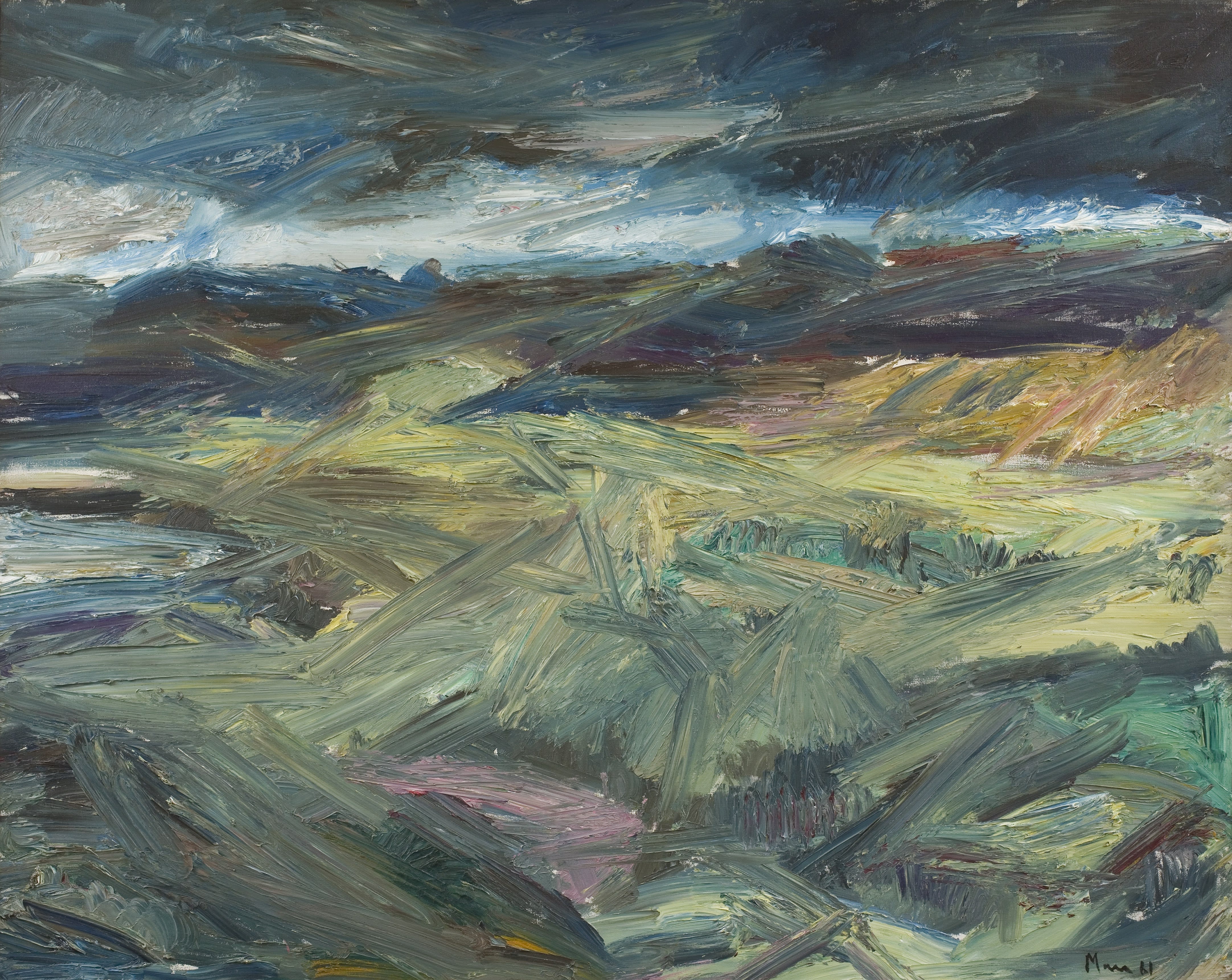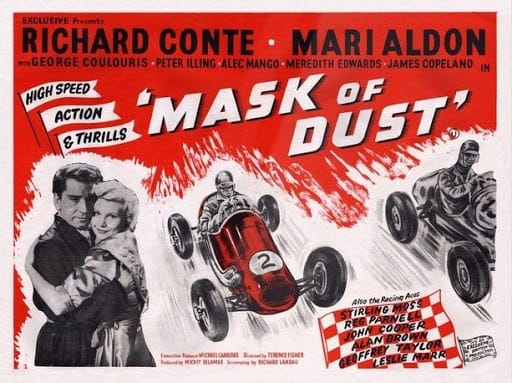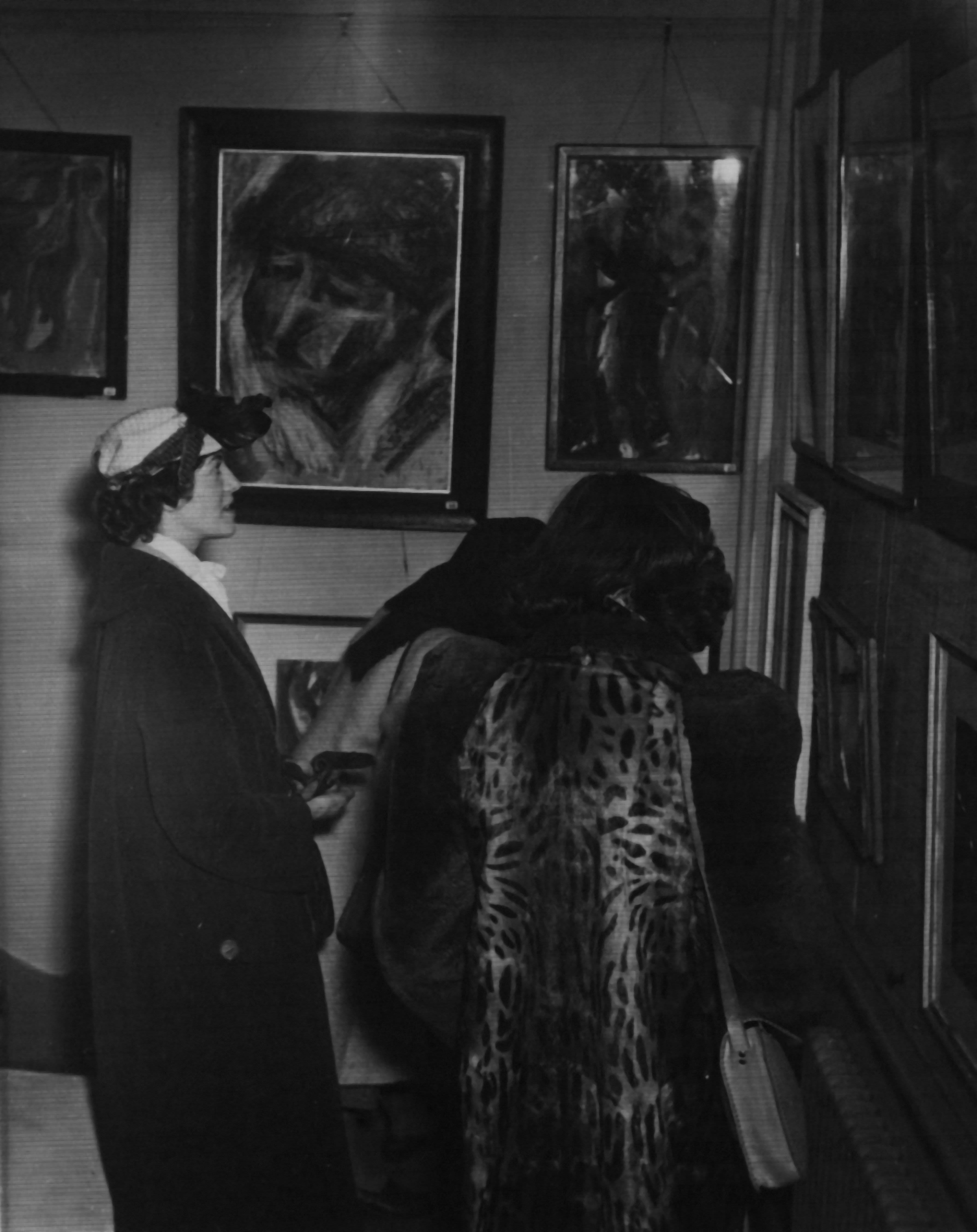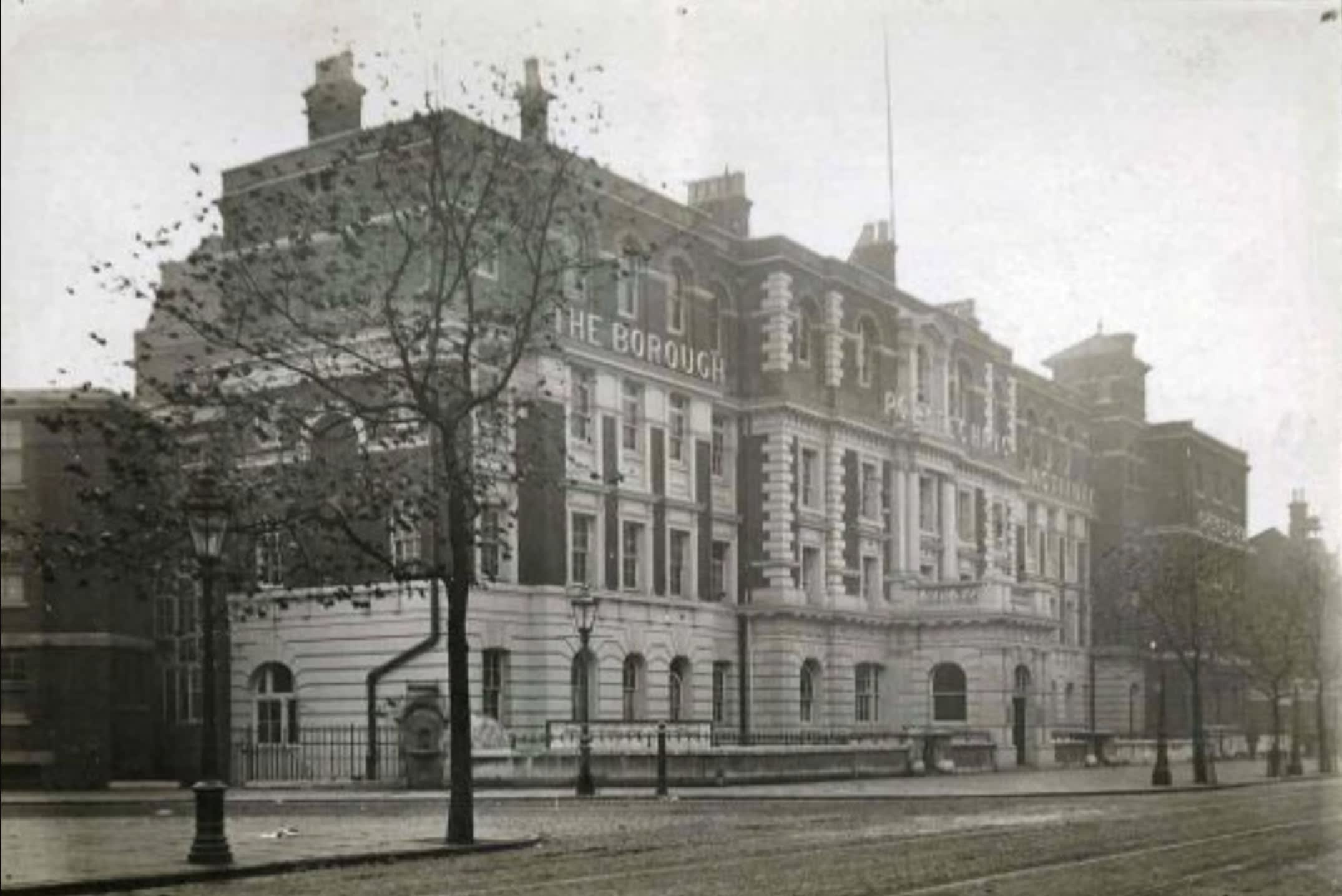In a few months’ time, Leslie Marr will celebrate his 98th birthday. A man of diverse talents, he travelled the world as a Formula 1 driver in the 1950s but eventually returned to art, finding a different kind of thrill as a professional painter.

In the 1950s, Marr briefly pursued a career as a privately funded Formula 1 racing driver. Motor racing at the time tended to be the preserve of gentleman amateurs, and contemporaries of his who also raced in a Connaught included Thai royalty – Prince Bira – and Kenneth McAlpine, a member of the engineering and construction dynasty. He participated as a ‘privateer’ in the World Championship’s British Grand Prix in 1954 and 1955, at Silverstone and Aintree respectively, and he enjoyed some success in local competitions, winning the Cornwall MRC Formula One Race in 1955. Around the same time, he also appeared in a film called Mask of Dust which featured a number of other glamorous British ‘racing aces’. Advertising material for the film promised ‘high speed, action and thrills’.

There was also a touch of adventure about some of Marr’s painting trips, which he undertook after swapping engine oil for oil paint. In 1961, Marr flew to Lake Mckerrow, New Zealand, in a five-seater twin-engine amphibious plane – a Grumman G-44 Widgeon. A photograph he took shows his painting equipment and canvases spread along the shore beside the aircraft. Mckerrow is in the Fiordland National Park, established just nine years earlier, and its steep terrain and wet climate provided Marr with the inspiration he needed. The works he made there depict tumultuous weather and evoke atmospheric effects in part by using a bold wet-in-wet technique. Many are composed using an armature of structural brushwork. In Lake Mckerrow, New Zealand (pictured above), long lines made with a single application of the brush criss-cross the surface of the work – a formal pattern which suggests an effort to frame and structure the wild landscape.

Marr’s interest in painting began many years earlier at the time of his posting to Palestine during the Second World War. Like Sickert before him, after the war he went on to learn the fundamentals in the life room at Heatherley’s Art School in London. The great influence of his career, however, was David Bomberg, who taught evening classes at the Borough Polytechnic in South London and inspired an exhibiting society – the Borough Group – of which Marr became a member.

Shortly after the war, upon Marr’s return to London, he met Dinora Mendelson. Some years earlier in 1929, Bomberg had married Lilian Holt, and in the process, he gained Dinora as a step-daughter. She was herself a painter and attended her step-father’s classes. After a fortuitous meeting in the Wheatsheaf Tavern, Soho, where Mendelson showed Marr some of her charcoal drawings from class, he also started attending the Borough and they later married in 1948, remaining together until 1956. Marr’s time in Bomberg’s classes made a deep and lasting impression upon him as an artist. He was not alone. In 1981, Leon Kossoff spoke to the critic Richard Cork about Bomberg’s evening classes which he also attended at the Borough in the early 1950s.
The atmosphere was intense and everyone was involved in an energetic manner. Bomberg was an intent teacher, showing respect for each individual student’s work; and though he was objective and concerned when talking about the emerging drawing, he always kept something of himself in reserve. […] His teaching time was coming to an end, life had been difficult and, at that time, he was rather frail and on a knife-edge.

The visit to New Zealand in 1961 was formative and highly successful, and Marr would never again waver from painting as a vocation. For the rest of his life, he has continued to seek out the wilds as a subject for his landscape art. Glen Ceitlin is near Loch Etive and curves round the base of Stob Dubh in the Grampians. In a work of 1976, Marr portrayed the glen and its looming neighbours from what appears to be the lowest possible perspective, emphasising the precipitous height of the mountains and registering the lowering sky with a palette of bruised pinks and muted saffron. This Highland landscape painting has a structural clarity and thick impasto redolent of Bomberg. However, despite its formal connection to the style of his teacher, this painting was not inspired by other works of art, but rather by the sublime wilderness of the landscape itself.

